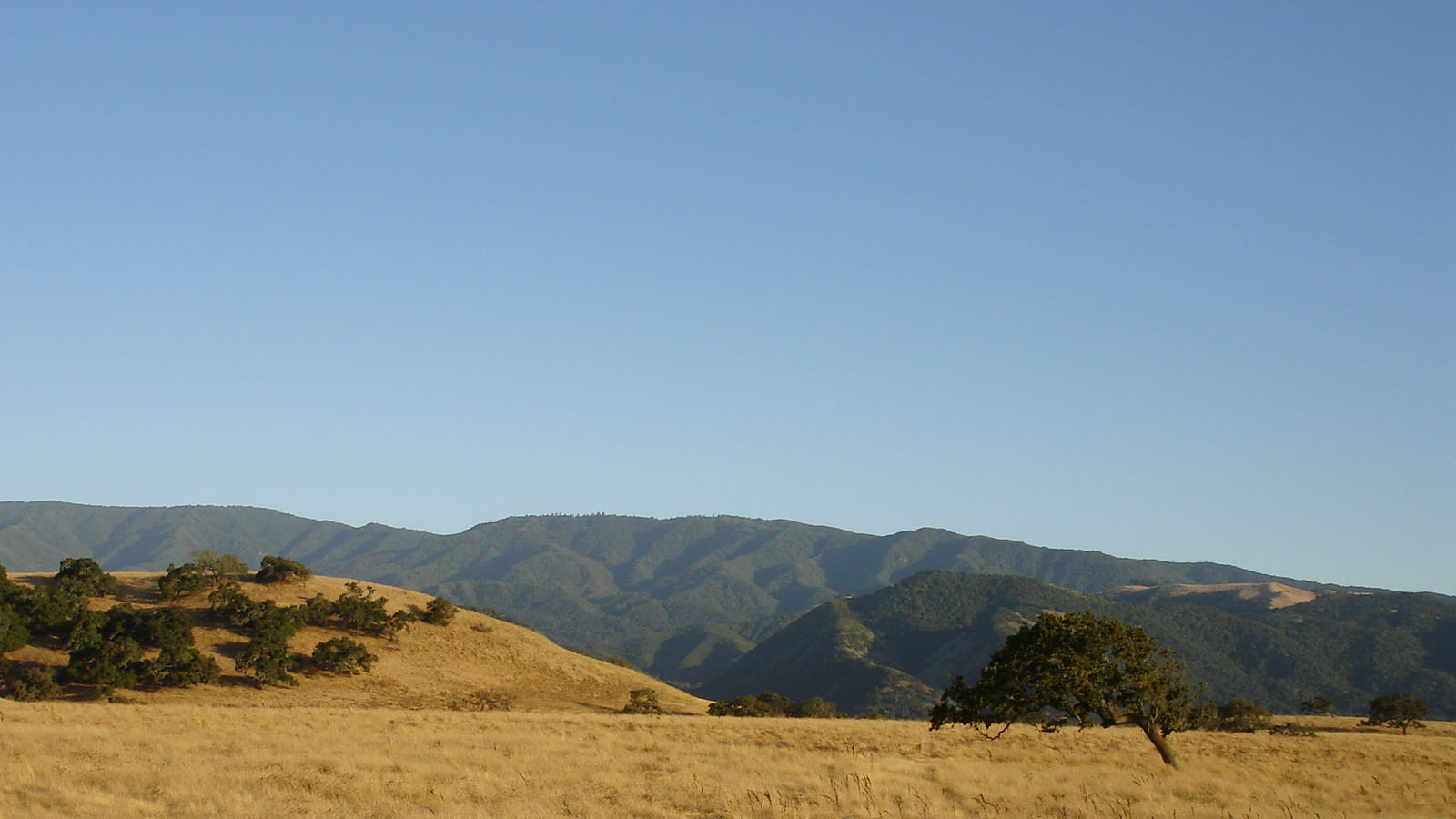Featured image: Oak savanna near the Santa Ynez mountains in California. Clyde Frogg, public domain.
Authors: Hahm, W. J., Dralle, D. N., Rempe, D. M., Bryk, A. B., Thompson, S. E., Dawson, T. E., & Dietrich, W. E.
Between 2011 and 2016, a severe drought killed over 100 million trees in California. However, not all places responded to this drought in the same way. In some locations, trees and other plants seemed hardly affected, while in other places mortality was widespread. What caused this difference? In a 2019 study, Hahm and colleagues explored the role that water storage in ecosystems has on their resilience to drought. With extreme droughts becoming more common due to climate change, understanding why certain areas are more vulnerable is important for making predictions and improving forest management.
Most of California experiences a Mediterranean climate, where winters are cool and wet, and summers are hot and dry. This means that most of the water that plants need to grow in the summer falls during wintertime. Through the summer, plants draw on water stored in soils and deeper in fractured rock that fell as snow or rain in the winter. It might seem natural to assume that when a drought strikes, the places that are best equipped to survive it are those places with the greatest capacity to store water. That is, places with deep soils and deeply weathered and fractured rock. Surprisingly, Hahm and colleagues show that this isn’t the case. In fact, places with small storage capacity are the most resilient to droughts. How could this be?
The authors use a conceptual model to show that in places that have a relatively small capacity to store water in soil and fractured rock, the water available to plants during the summer doesn’t vary significantly between wet years and dry years. In wet years, water beyond the storage capacity leaves as runoff to streams soon after it falls, making it unavailable to plants later in the dry season. In this case that storage is decoupled from precipitation. In contrast, places with a large capacity to store water show storage that is just as variable between years as precipitation. In this case, storage and precipitation are coupled in that one responds to changes in the other.
Using data from 28 watersheds across California, Hahm and colleagues show that in places where water storage is decoupled from precipitation, vegetation greenness measured by satellite is also decoupled from precipitation. That is to say, the plants in these places rarely feel the differences in precipitation because storage is usually the factor limiting how much water is available. Because water storage is low every year, ecosystems in these places tend to evolve with species that can survive on less water. In contrast, places where storage capacity is larger and dependent on precipitation show more variation in greenness between wet and dry years. They may also support species that need more water.
It can be very difficult to estimate the water storage capacity of most locations, largely because the deeper weathered rock that holds crucial water for ecosystems is mostly inaccessible to measurement. Fortunately, the method that Hahm and colleagues developed only relies on actual water storage, which they estimate using publicly available streamflow and weather data. This makes their method ideal for applying across more landscapes, helping to understand and protect ecosystems into the future.
Looking below ground for secrets to drought resilience by David Litwin is licensed under a Creative Commons Attribution 4.0 International License.


Fascinating, David! Just the opposite of what I would have expected! Way to go!